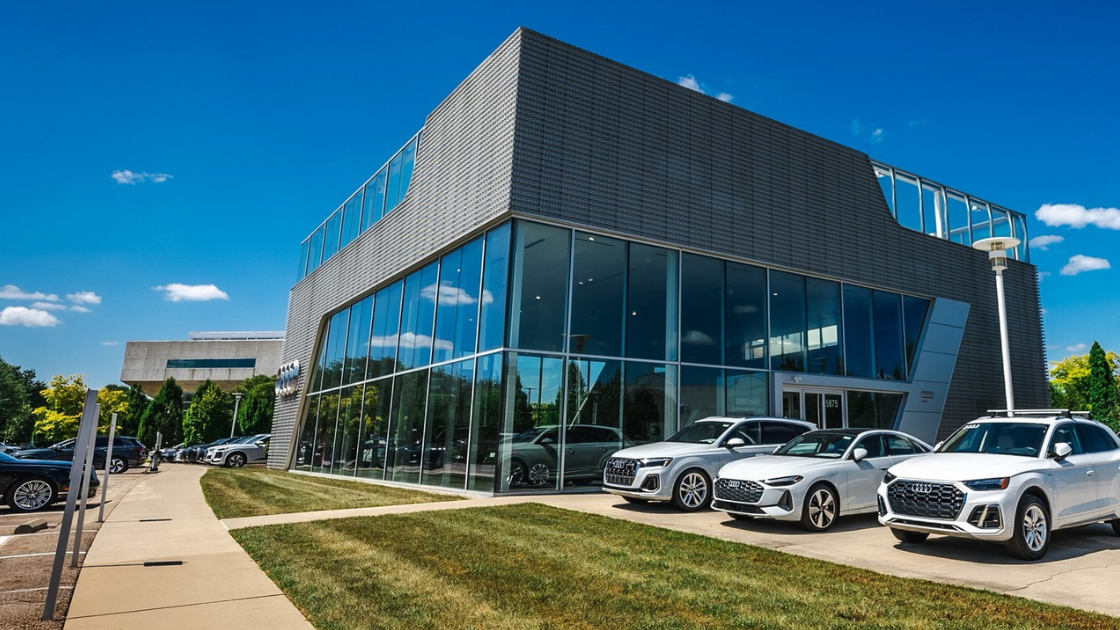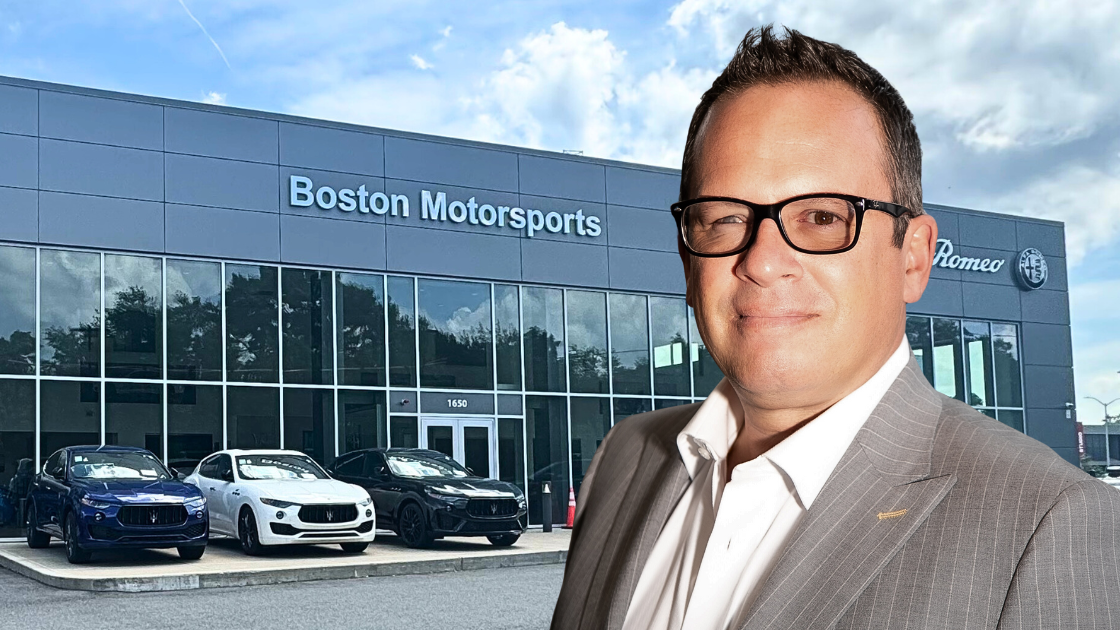Welcome to another episode of the Car Dealership Guy Podcast.
Today’s guest is Michael Kelley, General Manager of Bourne's Auto Center, an independent dealer group in South Easton, MA. In our conversation, Michael breaks down how to build a used car dealership empire, crushing $125 million in sales at one location, turning recon into a profits center, “cigars and P&L statements,” and much more.



Uber for Business - With Central, you can request a ride on behalf of your customers even if they don’t have the Uber app. If you’re ready to reduce the costs associated with maintaining shuttles and limit the liability of loaner vehicles, it's time to partner with Uber. Visit t.uber.com/CDGauto today.
Cars Commerce - The platform to simplify everything about buying and selling cars. Learn more at carscommerce.inc.
CDG Job Board - Connecting world-class talent with top-notch companies in Automotive. Find your next role—or start hiring today—at CDGJobs.com.
Interested in advertising with Car Dealership Guy? Drop us a line here.
Want to be considered as a guest on the podcast? Add your name here.

(3:30) - Michael’s career in auto
(5:31) - What are the high-level numbers for your dealership?
(8:12) - What is your sales structure?
(10:08) - What are your margins today?
(16:58) - How are you managing your reconditioning center?
(20:55) - How are you approaching your value lot?
(24:36) - What’s your appraisal process?
(26:40) - How do you share reconditioning with customers?
(27:55) - What is your sales process?
(34:22) - What is your customer demographic?
(36:56) - What is the value proposition you market to get people to come to your store?
(38:53) - How much are your salespeople making?
(41:28) - How are you acquiring used cars?
(46:11) - Inventory carry costs
(48:04) - What’s your role in the business?
(48:32) - Michael’s Florida experience
(1:00:39) - Have you ever considered going franchise?
(1:02:54) - Get in touch with Michael at [email protected].

1. From insurance adjustments to car sales.
About a year after graduating from college, Michael was working for an insurance company adjusting claims. Jason Bourne, the owner of Bourne’s Auto Center, met Michael a few times while he was in high school and college, so he reached out. Bourne had a small used car lot at the time but wanted to grow the business and needed someone to take over the sales department. It was a perfect fit for Michael, who was looking for a way out of the insurance business. “When I started at the company, I treated it like it was my own business, which I still do. Having that mentality right out of the gate has worked for us,” said Michael.
2. By the numbers.
Last year, the group’s flagship store in South Easton sold nearly 3,000 retail cars and just over 4,000 total units. On a monthly basis, the dealership sells 300 to 315 cars. The group also has another business called Car Bids, which used to be a $10,000 and under lot, but today, it’s more like a $15,000 and under lot. On top of that, the group has an off-site reconditioning center to service all the vehicles that come through. The organization's total revenue is about $125 million annually.
3. Breaking down the sales model.
In 2003, Bourne’s Auto Center shifted to a fixed-price, no haggle sales structure. After scouting a few CarMax locations, the decision was made to change up the model. “We price very competitive to markets,” says Michael. “You know, lower front-end gross, and we obviously rely a lot on the back-end. We have a pretty substantial documentation fee as well.” The main reason for the switch? In order to scale and do the volume the group wanted, transactions had to be faster and negotiations were holding up the process. “We try to get somebody in and out of here in 45 minutes as soon as they say they want to buy the car,” adds Michael. Front-end grosses average around $800 and they strive for $1,500 on the back-end.
4. Reconditioning costs are, on average, $900 to $1,000 per car.
Before opening up the off-site reconditioning center, the dealership’s service department was dealing with customer pay work, service contracts, and used car policies, so oftentimes, the “lot” cars that needed reconditioning got pushed to the back burner. Having the off-site reconditioning center makes things much faster. They don’t touch any customer cars–it’s essentially a “used car factory.” The labor cost for a $1,000 RO system is likely around $149 per hour, but the company discounts it to $95 per hour for internal work. This, along with a 40% markup on parts, brings the estimated profit margin for a $1,000 RO system to around $400. How does Michael manage the reconditioning process? In 2015, the company had its own software built to systematize the process.
5. Building trust through recon transparency.
The old way used to be that the dealership would wait until after a test drive to present the customer with a physical printout all about the car's reconditioning, including a CarFax report and internal repair order. They aimed to build value in the car and the dealership by showcasing the work done as opposed to negotiating price. However, Michael recently switched to using a company called I-Packet, which allows car buyers to see reconditioning details directly on the dealership website. Customers have access to the vehicle's service history and reconditioning information even before stepping into the store.
6. What the sales process looks like at Bourne’s Auto Center.
“Our sales staff is very, very seasoned. I think our least tenured salesperson has been here for three years. But we built the process kind of together. I think we have a great GSM, Carlos. He's been with us for over 10 years. One of our finance managers, Sean, has been here for 17 years. So this process has kind of evolved, but it's speed,” says Michael. One key difference at the store is that salespeople don't join customers on test drives. This frees them up to crunch numbers on pricing and trade-in values while the customer explores. The dealership also has a dedicated check-in area and CRM system to handle customer information smoothly. Of note, Massachusetts regulations and customer habits seem to influence the buying process here. Unlike some places, many customers (around 80%) take care of paperwork and pick up their vehicles separately.
7. Getting the word out.
Reviews are critical, says Michael. The group was an early adopter of DealerRater and has amassed over 4,700 reviews with an average rating of 4.9 out of 5 stars. Bourne’s Auto Center also has an average rating of 4.6 out of 5 for over 1,600 reviews on Google. Referrals are another way the store drives traffic. 50% of sales month in and month out are repeats/referrals. The brand’s overall reputation really brings customers in, and it starts with the staff. “ I think there's something to the longevity of the staff – when you come in and you're like, ‘Wow, Dave's here. Dave's still here.’ Dave's been here for 20 years. I mean, that tells you that the place is good, you know? And so I think that that just kind of builds on itself over time.”
8. Retaining top talent.
Michael has several employees who have spent over a decade at the dealership. “We don't pay off the gross. We pay a low base, and then we pay a flat per car. And then we pay spiffs, you know, if the customer takes the car that day, we'll pay them a spiff. If they finance it, pay them a spiff, if they buy a warranty, cause we want them to kind of set the table for that at the sales desk, not talk too much about it, but set the table for it,” he explains. If a salesperson sells 35 to 40 a month, they are likely making between $100,000 to $150,000 at the store. The combination of the way the store is run plus the income salespeople are taking home is a winning formula for the business.
9. Managing floor plan expenses.
The store’s floor plan expense, the interest paid on borrowed money to finance inventory, was $67,000 last month. To bring costs down, Michael says the focus is on selling cars quickly, aiming for 50% of their inventory to move within 30 days. Currently, they're achieving a 42% success rate. A faster turnaround translates to less interest accumulating on the loan. “What we've also done is that we're just trying to pay cash for as many cars as we can…we're owning about probably about half of our inventory right now. So you need to sell it fast, for both reasons. When it’s cash, you need to sell it fast. When you're financing it, you need to sell fast.”
10. Unexpected twists venturing into the Florida market.
Michael’s expansion into Florida wasn’t all sunshine and palm trees. After finding a prime dealership location, he soon faced roadblocks like securing loans and building brand loyalty. Regulatory differences between Massachusetts and Florida added another layer of complexity. The turning point came in late 2022 and early 2023, a brutal time for the used vehicle market. Used car prices plummeted – gross profits shrank, car quality declined, and floor plan expenses skyrocketed. Under this pressure, Michael decided to sell the dealership’s real estate. In a stroke of luck, Michael’s first buyer backed out, sparking a bidding war that turned out to be pretty lucrative.








